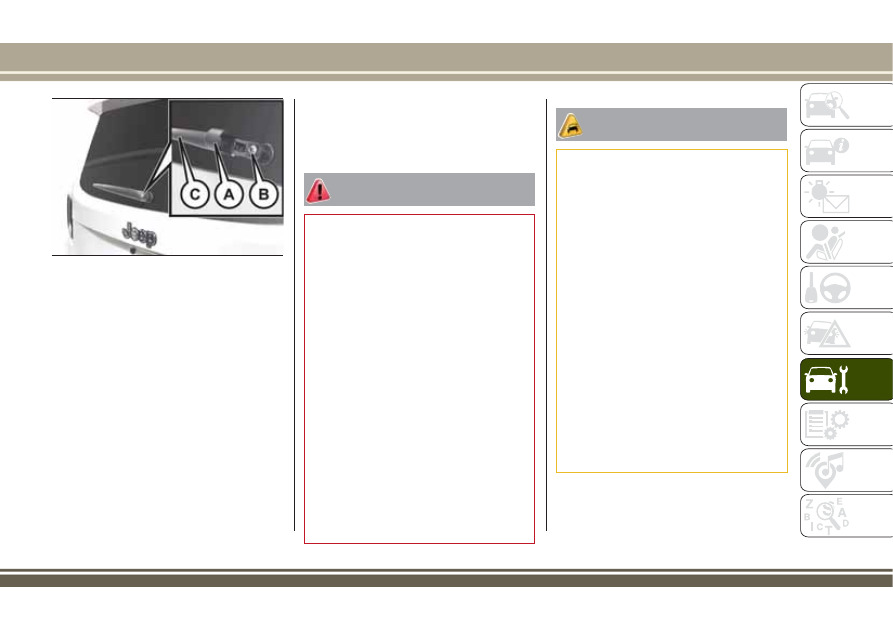Jeep Renegade (2018 year). Instruction - part 16

IMPORTANT Do not operate the rear
window wiper with the blade lifted
from the rear window.
Windscreen washer
The windscreen jets, located on the
bonnet, are fixed.
If there is no jet of fluid, firstly check
that there is fluid in the reservoir (see
paragraph “Engine compartment” in this
chapter). Then check that the nozzle
holes are not clogged; use a needle to
unblock them if necessary.
IMPORTANT In versions with a sun
roof, make sure that the sun roof is
closed before operating the window
washer jets.
Rear window washer
The rear window washer jets are fixed.
The nozzle holder is located above the
rear window.
WARNING
189) The air intake system (air cleaner,
rubber hoses, etc.) can be a protection in
the case of blowbacks from the engine.
DO NOT REMOVE this system unless you
need to carry out repair or servicing
operations. Before starting the engine,
ensure that the system has not been
removed: failure to observe this precaution
may result in serious injury.
190) Exhaust emissions are very
dangerous, and may be lethal. They
contain carbon monoxide, a colourless,
odourless gas which can cause fainting
and poisoning if inhaled.
191) The exhaust system may reach high
temperatures and may cause a fire if the
vehicle is parked on flammable material.
Dry grass or leaves can also catch fire if
they come into contact with the exhaust
system. Do not park or use the vehicle in a
place in which the exhaust system might
come into contact with flammable
material.
IMPORTANT
89) Incorrect servicing of the vehicle or
failure to carry out operations or repairs
(when necessary) may lead to more
expensive repairs, damage to other
components or have a negative impact on
the vehicle performance. Have any
malfunction inspected immediately by a
Jeep Dealership.
90) The vehicle is equipped with fluids
which are optimised or protecting its
performance and life and extending
service intervals. Do not use chemicals for
washing these components since they may
damage the engine, the gearbox or the
climate control system. This damage is not
covered by the vehicle’s warranty. If any
component needs to be washed due to
malfunctioning, use only the specific
liquid for that procedure.
91) An excessive or insufficient amount of
oil inside the base is extremely damaging
to the engine. Make sure it is always at an
adequate level.
205
J0A0346C
253